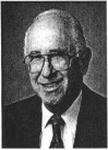版权所有:内蒙古大学图书馆 技术提供:维普资讯• 智图
内蒙古自治区呼和浩特市赛罕区大学西街235号 邮编: 010021

作者机构:Univ Granada Dept Signal Theory Telemat & Commun Res Ctr Informat & Commun Technol CITIC UGR Granada 18014 Spain Univ Malaga ETS Ingn Telecomunicac Telecommun Res Inst TELMA Malaga 29010 Spain Univ Politecn Madrid Dept Matemat Aplicada TIC ETSI Telecomunicac Madrid 28040 Spain
出 版 物:《IEEE TRANSACTIONS ON ANTENNAS AND PROPAGATION》 (IEEE Trans Antennas Propag)
年 卷 期:2024年第72卷第3期
页 面:2932-2937页
核心收录:
学科分类:0810[工学-信息与通信工程] 0808[工学-电气工程] 08[工学]
基 金:Ministerio de Ciencia e Innovacion (MCIN)/Agencia Estatal de Investigacion (AEI) [PID2020-112545RB-C54, IJC2020-043599-I] European Union NextGenerationEU/Plan de Recuperacion, Transformacion y Resiliencia (PRTR) [PDC2022-133900-I00, TED2021-129938B-I00, TED2021-131699B-I00] Ministerio de Universidades European Union NextGenerationEU, through the Programa Margarita Salas
主 题:Computational prototyping frequency-selective surfaces (FSSs) gating-reflect-line (GRL) calibration simulation and optimization
摘 要:This work employs a new approach to analyze coupled-resonator circuits to design and manufacture a fully metallic dual-polarization frequency-selective surface (FSS). The proposed filtering structure is composed of a series of unit cells with resonators fundamentally coupled along the z-direction and then repeated periodically in the xy-plane. The fully metallic cascaded unit cell is rigorously analyzed within an infinite periodic environment as a coupled-resonator electromagnetic (EM) circuit. The convenient design of the EM resonators makes it possible to push the evanescent EM field through the metallic structure in the desired frequency band for both polarizations. An FSS prototype is manufactured and measured, and good agreement is found between the simulation results and the final prototype.